Table of Contents
How to Judge the Attitude of the Statesman:
After the above classification (Classification of Statesman’s Personality), we want to find out to what extent the personality of the statesman explains his attitudes. For this purpose, as Prof. Jean. B. Duroselle writes, “The best way to distinguish the essential features is probably to try to discover in sources such as diplomatic documents, memories, and speeches- the questions that statesmen and diplomats ask most frequently about the foreign statesmen they deal with. In this way, we can arrive at a simple empirical listing of contrasting types”. As such we can classify the statesmen in the following manner as has nicely been done by Prof. Duroselle-
The Doctrinaire and the Opportunist:
Doctrinaires- or “theorists” as Lasswell calls them- adopt a coherent system of thought and try, as far as possible, to harmonize their decisions with that system. Opportunists, or empiricists, do not cling to any one particular system; they regulate their conduct according to circumstances. Naturally, there are no wholly consistent doctrinaires, since circumstances sometimes impose decisions that are out of line with doctrine, and all opportunists have general ideas to which they are faithful.
An example of a doctrinaire, though a more flexible one with an extraordinary faculty for adaptation, was Lenin.Bertrand Russell said of him that Lenin was “an embodied theory. The materialist conception of history, one feels, in his life-blood. He resembles a professor in his desire to have his theory understood and in his fury with those who misunderstand or disagree. Stalin followed the same doctrinaire line”.
These doctrinaire types may be contrasted with “opportunists”. Men like Lloyd George, Pierre Laval, however different they may have been in political stature and moral standards, were similar in that none of them were men of doctrine. Their ideal was continuing series of successes, whatever the nature of success.
As a final example, Pierre Laval, the Premier of France under German occupation in World War II, whose flexibility was often akin to servility, was an empiricist and an opportunist “irresistibly drawn to a facile solution,” empirical rather than doctrinaire.
The Fighter and the Conciliator:
There are some statesmen who prefer to conquer states rather than acquire them as is the case with Louis XIV. There are others who shrink from war. In French history example of the former would be George Clemenceau, Premier in 1917-19; of the latter, Briand. It is no accident that in one and the same year (1917), Briand agreed to take part in preliminary feelers for negotiations, while Clemenceau expressed the essence of his policy with the statement, “I am waging a war”. True, Clemenceau sometimes appeared as a conciliator- for instance, in March 1971, or during his term of office in 1906-09, but he was essentially a fighter. He liked to make enemies (politicians were almost universally hostile to him) and he poured out contempt on his foes. He justified his last fight in these terms:
“When a man has placed the whole interest of life in action, he is little likely to pause over unnecessary trifles…might perhaps have been capable of turning my back on my duty had not the breath of the great days magically fanned to new life an old, ever-burning flame of the emotions of the past”.
Briand was not that type of man. If at first, he appeared hot-headed it was probably in the interest of his career to be so. But the same interest and his temperament, inclined him to conciliation. The first great event in his political life was his report on the law of separation of church and state; there was a fighting issue par excellence, and he made of it a work of conciliation.
Briand himself emphasized the relation between international conferences and the benefits of conciliation.
These gatherings of people represented by the leaders of their governments are something new in world diplomacy. And even…if they do not produce all the results which might be expected, they are useful because they can dispel many misunderstandings, they can prompt many endeavours which will bring the people closer together, summoning them to make reciprocal concessions.
The Idealist and the Cynic:
Some of the statesmen are idealists or cynics. Wilson was an idealist whereas Bismarck was a cynic. “There are examples of this attitude in Wilson’s statements at his meetings with Clemenceau, Llyod George, and Orlando. He argued for instance, that U.S. policy was to secure an equitable territorial settlement and a lasting agreement among peoples- hence the United States” greatly desire to eliminate all sources of discord and antagonism. In other words, the idea of a lasting peace could be promoted by the application of certain general principles, not by the furtherance of particular interests. This rejection of particular interests applied to the United States as well. What he sought, said Wilson, was not to deviate from the path of the world’s great thrust toward justice. He wished to do nothing that would allow others to say of Americans that they professed fine principles but made exceptions wherever sentiment or national interest promoted them to depart from the rule.
Such attitude was never found in Bismarck. His “cynicism” was more than rough frankness, verbal brutality which he used as a tried and true instrument of diplomacy. It was above all “sacred egoism” and an admission that the state was a supreme value. Yet Bismarck was not a totalitarian. He recognized an international society based on certain rules.
The Inflexible and the Imaginative:
The inflexible man sticks to certain methods. But he is not a creator. He is unable to solve new problems. The imaginative man can invent new solutions. For example, we can contrast Hoover with Roosevelt. Hoover was a President of the U.S.A. According to Mario Einaudi, “Temperamentally, Stimson and Mr Hoover were wholly different. One was by nature and training an advocate and a fighter; the other was an organizer and planner. Mr Hoover liked to calculate his moves as he would the building of a bridge, while Stimson preferred to choose his main objective and then charge ahead without worrying, confident that aggressive executive leadership would win followers”.
Frank D. Roosevelt, on the other hand, confronted with the economic crisis, produced (with the help of his “brain trust”) flexible and imaginative methods of governmental intervention. Halted in this endeavour by the Supreme Court, he hit on the expedient of reforming it, “it was a “Roosevelt revolution”. Roosevelt, according to one writer, was “the supreme democratic leader of our time……”
The Gambler and the Cautious Man:
Some statesmen are gamblers and they take risks. There are others who avoid risks and are slow and prefer to wait. We can distinguish Napolean III and Marshal Petain, who for example, combined a certain taste for danger with extreme irresolution in executing decisions. At Biarritz, Napolean III said several times to an astonished Bismarck, “We should not make circumstances; we should let them develop and then adopt our decisions to them- the “wait and see” attitude, often the policy of the irresolute. Marshal Petain in 1940-44, whose advanced age doubtless had something to do with his indecision (witness his hesitation over whether to choose Baudouin or Lavel as Foreign Minister on June 16, 1940 and again over what response he should take to the British attack on the French fleets at Mers-el-Kebir on June 3), was the very embodiment of the ‘wait and see’ advocate. It was probably a deep-rooted personality trait, “I am waiting for the Americans and the tanks,” he had said in 1917.
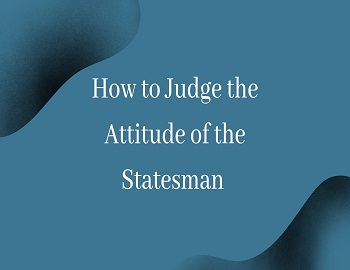
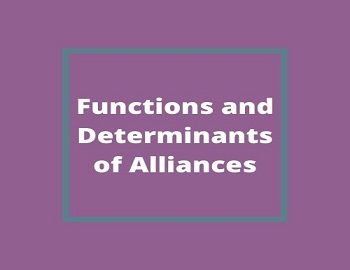

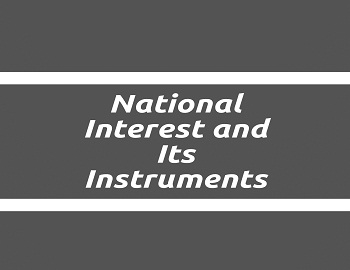
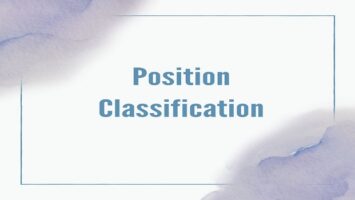
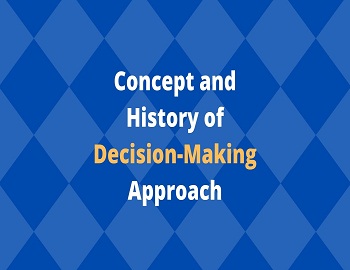



Comments (No)